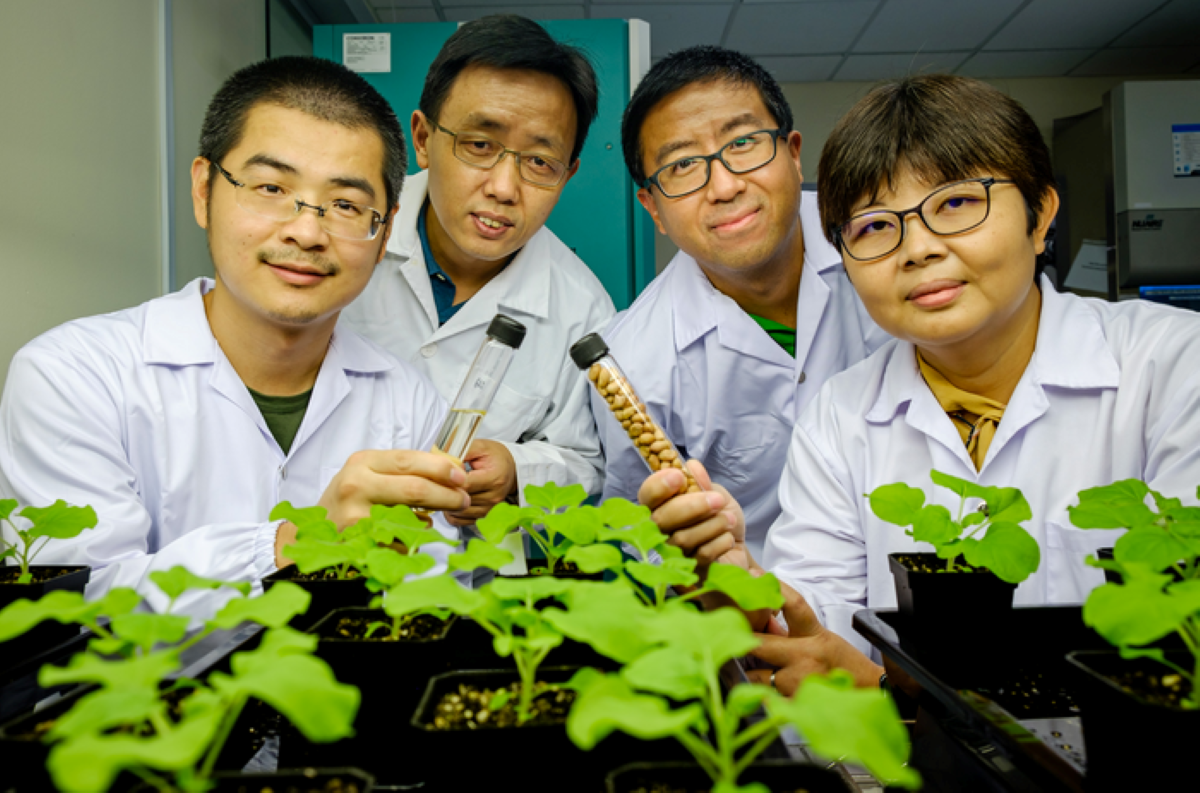
The farming industry's holy grail is figuring out how to increase the amount of oil that crops produce in their seeds. The majority of oil-producing plants, such as oil palm, soybean, sunflower, rapeseed, and peanuts, already contain a high proportion of oil in their fruits or seeds, and traditional crop crossbreeding techniques make it difficult to increase their oil content.
Vegetable oils are widely used in the production of biofuels, soaps, and perfumes. It is predicted that the global market for these oils will be worth US$241.4 billion in 2021 and US$324.1 billion in 2027. By decreasing the amount of arable land required for oil-producing crops, increasing the yield of oil from plants could aid the global effort to achieve sustainability.
One of plants' proteins called WRINKLED1 holds the key to assisting them in storing more oil in their seeds (WRI1). For more than 20 years, researchers have understood that WRI1 is crucial in regulating the production of plant seed oils. The NTU team, which is jointly led by Associate Professor Gao Yonggui and Assistant Professor Ma Wei from the School of Biological Sciences, has now imaged and reported the first high-resolution structure of WRI1.
The team described the molecular structure of WRI1 and how it binds to plant DNA, informing the plant how much oil to accumulate in its seeds. Their findings were published in the journal Science Advances. Based on the knowledge provided by the WRI1-DNA complex's atomic structure, the team changed WRI1 to increase its affinity for DNA in an effort to increase oil yield. With this method, various forms of WRI1 were created after some parts of WRI1 were chosen for modifications to enhance its binding to DNA.
The capability of this potential WRI1s to stimulate oil production in plant cells was then evaluated through additional testing. The team demonstrated that their modified versions of WRI1 increased DNA binding ten-fold compared to the original WRI1, resulting in more oil content in the seeds.
Structural biologist associate professor Gao said, "Understanding the entire procedure required being able to precisely visualize WRI1 and how it binds to the DNA that controls oil production in the plant. The WRI1 regulator is crucial because it tells the plant how much oil to store in its seeds. After being able to see the "lock," we then created the "key" that can release WRI1's potential."
How modifying WRI1 works
The team discovered this DNA binding domain was highly conserved by analyzing at the atomic level the crystal structure of the WRI1 protein and the double helix DNA strands that it binds. This indicates that there were few to no variations, which raises the possibility that it could be a typical binding mechanism for numerous plant species.
The team then looked to modify WRI1 in order to increase the protein's affinity for its target DNA by using this crystal structure of WRI1 as the "target." The target plant cells are then given the instructions for coding this modified WRI1 protein, and the plant will use this new "set of instructions" going forward to produce WRI1.
Both the modified protein and the unmodified form of WRI1 were injected into Nicotiana benthamiana leaves in lab experiments to observe how the modified protein affects oil accumulation. Triacylglycerol levels, a significant dietary lipid found in fats and oils, were then measured. When compared to the control plant introduced with the unmodified form of WRI1, the modified WRI1 protein caused more pronounced increases in the production of triacylglycerol.
It was discovered through subsequent research that the oil content in the seeds of the modified Arabidopsis thaliana was higher than that of the unmodified variety. The descendants of this genetically altered plant will also carry the altered WRI1 protein and have seeds that contain more oil.
"We are aware that the protein WRI1 binds to a plant's DNA sequence and initiates a particular sequence of instructions that controls the build-up of oils in the seeds. The plant will concentrate more oil in its seeds the stronger the binding. We chose to enhance this region of WRI1, which is highly conserved across many seed-bearing plants and binds to its target DNA. We should be able to easily translate our oil-yielding modification to many different types of crops in the future because the mechanism is highly conserved across many species of plants, Asst Prof Ma said.
"Plant seed oil is essential for human nutrition and has many significant industrial uses. The demand for plant oil is rising rapidly around the world, and our research helps with efforts to increase seed oil production in a sustainable way, potentially lowering the impact of agriculture on the environment "Professor Ma added.
The team is now seeking industry partners to help them commercialise their invention after filing a patent for their method of gene modification through NTUitive, the University's innovation and enterprise office.
This research aims to research and develop new technologies toward a greener future and is in line with the NTU2025 strategic plan and the university's sustainability manifesto.
There are several ways to combat world hunger, including by increasing the amount of food produced or by increasing the calories and nutritional value of the food produced, according to Michael Fam Chair Professor William Chen, Director of the NTU Food Science & Technology Program.
"If we want to end world hunger in a world with limited arable land, we need advanced technologies to grow more food with higher nutritional value. Prof. Chen, a food security expert who was not involved in this study, stated that when we can increase the fat content in edible seeds and nuts, a person can eat a lesser amount while still feeling full because of the increase in calories consumed.
"We should therefore consider methods, where the crops grown, have more calories and nutrition so that the same amount of food can feed more people, rather than growing more crops to feed more people," he added.
(Source: Nanyang Technological University of Singapore)
















